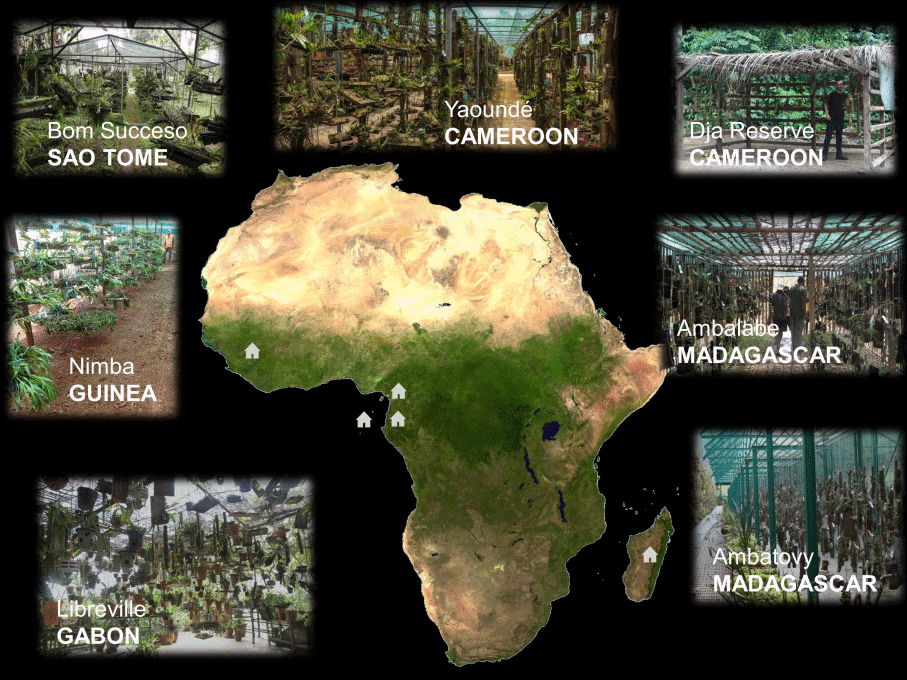Most orchid species occur in the tropics where they account for a large part of epiphyte diversity; however, they are particularly challenging to document and sample. In Central Africa, for example, 70% of the epiphyte flora is composed of orchids, and ca. 90% of epiphytic orchids encountered in the field are sterile and therefore nearly impossible to identify. Moreover, most historical specimens are poorly conserved, obscuring key features, making identification difficult, and precluding the description of new species.
To overcome these obstacles, a shadehouse cultivation system has been successfully developed in three key areas (West Africa, Central Africa, and Madagascar) to obtain fertile, identifiable material of orchid taxa. The system was initially tested in São Tomé in 1997, and has proved to be an efficient and cost effective sampling procedure for epiphytes, yielding high quality liquid specimens, photos, and leaf tissue for phylogenetic analyses. This material has been used for conducting taxonomic revisions of difficult genera (e.g. Cyrtorchis, Rhipidoglossum), to describe 41 previously unknown species, and to assess the conservation status of hundreds of species in tropical Africa, while also contributing to the publication of more than 50 articles in taxonomy, phylogeny, floristics and for the general public.

This method is particularly successful for conducting thorough inventories of targeted areas since most living epiphytes found in the field can be brought into cultivation. For example, we doubled the number of known orchid species of São Tomé and Príncipe in just a single year by using the shadehouse method. Our method also provided data used to conduct the first biogeographical study of orchids from West Central Africa. Moreover, the living plants grown in shadehouses can yield fertile material year after year, enabling specimens to be sent to numerous herbaria. Finally, the cultivation of rare and endangered orchid species contributes to their ex situ conservation; the shadehouse can also serve as a living museum where orchid species can be shown to the public and to tourists.

Stévart, T., Sonké, B., Simo, M., Biteau, J.P., Faustino de Oliveira, F. & Droissart, V. (2010) How to collect more than 500 fertile epiphytic orchid specimens per year? The Central Africa shadehouse network as a tool to study tropical orchid diversity. In: Abstracts of the 19th AETFAT congress, p. 467. Antananarivo, Madagascar.



